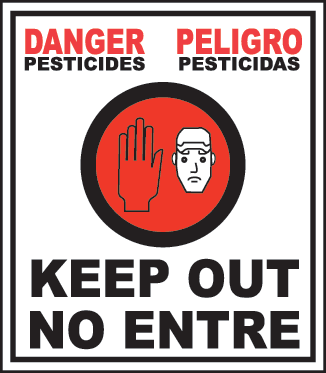 “Young farm workers suffer more than 23,000 injuries and 300 fatalities on American farms every year. Using survey data collected from a random sample of working teens (ages 14 to 17) in North Carolina… the data shows that teens working on farms in North Carolina are exposed to significant safety hazards throughout their farm working careers. A majority of the respondents in this group of farmworkers reported exposure to tractors, large animals, all-terrain vehicles, farm trucks, and rotary mowers, and more than one-third reported exposure to pesticides and tobacco harvesters.” Schulman MD, Evensen CT, Runyan CW, Cohen LR, Dunn KA. (http://www.ncbi.nlm.nih.gov/pubmed/10177151)
“Young farm workers suffer more than 23,000 injuries and 300 fatalities on American farms every year. Using survey data collected from a random sample of working teens (ages 14 to 17) in North Carolina… the data shows that teens working on farms in North Carolina are exposed to significant safety hazards throughout their farm working careers. A majority of the respondents in this group of farmworkers reported exposure to tractors, large animals, all-terrain vehicles, farm trucks, and rotary mowers, and more than one-third reported exposure to pesticides and tobacco harvesters.” Schulman MD, Evensen CT, Runyan CW, Cohen LR, Dunn KA. (http://www.ncbi.nlm.nih.gov/pubmed/10177151)
 Teens in agriculture are working one of the most dangerous jobs in the United States, and the rate of injuries clearly demonstrates this. To put the number of injuries and deaths in perspective, five teenage farm workers are injured every two hours, and four die in accidents every five days. The accidents that take away their lives and livelihoods are preventable, and we should be doing all we can to decrease the number and severity of these accidents, starting with informing those involved exactly what needs to be done to keep themselves safe.
Teens in agriculture are working one of the most dangerous jobs in the United States, and the rate of injuries clearly demonstrates this. To put the number of injuries and deaths in perspective, five teenage farm workers are injured every two hours, and four die in accidents every five days. The accidents that take away their lives and livelihoods are preventable, and we should be doing all we can to decrease the number and severity of these accidents, starting with informing those involved exactly what needs to be done to keep themselves safe.
Pesticides are common causes of injuries in agriculture. It is possible to pick up pesticides from fields that have been treated or sprayed or when handling and applying them. Pesticides can enter your body in many ways, such as simple contact through skin and clothes, breathing mist, dust, fumes, or smoke containing pesticides and chemicals. You can even poison yourself if you don't wash your hands before eating.
The acute symptoms (develop immediately after moderate or high exposure to pesticides) of chemical exposure include:
• Dizziness.
• Vomiting.
• Headache.
• Fatigue.
• Drowsiness,
• Skin rashes.
The chronic effects are not fully documented, but there are suspected damaging effects on the central nervous system (brain and spinal cord), lung diseases, soft tissue cancer, Hodgkin’s disease, non-Hodgkin’s lymphoma, leukemia, and lung cancer. Protection from pesticides isn’t an unnecessary bother; it saves lives.
When using pesticides, it is very important to read the label. The label includes:
• Toxicity of the chemical.
• Directions for mixing and applying.
• Poisoning symptoms.
• First-aid and antidote instructions.
• Hazards to humans, domestic animals, and the environment.
Knowing the hazards and what to do in case of an accident can help, but it cannot replace using the proper safety equipment, and the equipment cannot replace the knowledge. Using both, the danger is lessened, but still there. Always remember that the danger never leaves, and is only held back by following safety guidelines and using the right equipment.
The safety equipment for using pesticides comes in five groups: gloves, respirators, clothing, goggles, and boots.
Gloves:
• Hands are the most likely to be exposed to pesticides.
• Gloves can reduce exposure by up to 99%.
• Synthetic gloves, like Nitrile and Neoprene, offer some of the best protection.
• Paper, leather, and fabric gloves absorb and retain liquids, and should NOT be used for protection.
• Check the Breakthrough Time (BTT) on gloves. This is the time (in minutes) that it takes for a chemical to get through the gloves, and should be over 240 minutes for chemical gloves.
Respirators:
• The quickest way for a chemical to enter the bloodstream is through the lungs.
• Respirators protect against dust, mists, fogs, and vapors.
• They will not protect against places that are considered Immediately Dangerous to
Life and Health (IDLH), such as manure pits or silos.
• They don't offer protection from fumigants. Fumigants are highly penetrating and can
penetrate the rubber and plastic on respirators.
• Respirators should not be used by people with heart conditions or respiratory
impairments.
• Always make sure that the respirator is sealed using a fit check (breathe in while covering the intake and breathe out while covering the exhale hole. If air can get in and out, reseal it).
Clothing:
• Cotton clothing can protect against low-level pesticides, but a chemical-resistant suit protects the best.
• Make sure that the suits are large enough that they don’t tear during movement.
• If the suits are reusable, wash them three times separately from other clothing with heavy detergent, hot water, and full water load. Run the empty washer again with detergent
to clear out residue.
• Hang the suits out to dry. The rubber parts in dryers can absorb residue.
• Replace the suits every year.

Goggles:
• Goggles protect the eyes from splashes drifting dust.
• Goggles should be anti-fog so they don't interfere with vision.
Boots:
• Leather and canvas boots absorb chemicals and should NOT be worn.
• Rubber boots do not absorb.
• Wear pant legs over the boot tops.
(Read more at http://pubs.cas.psu.edu/freepubs/pdfs/e35.pdf.)
The use of this equipment and the safety procedures that go with handling pesticides can greatly decrease the number of injuries to young and old farmworkers. Always be safe in whatever you do.

-1.png)

